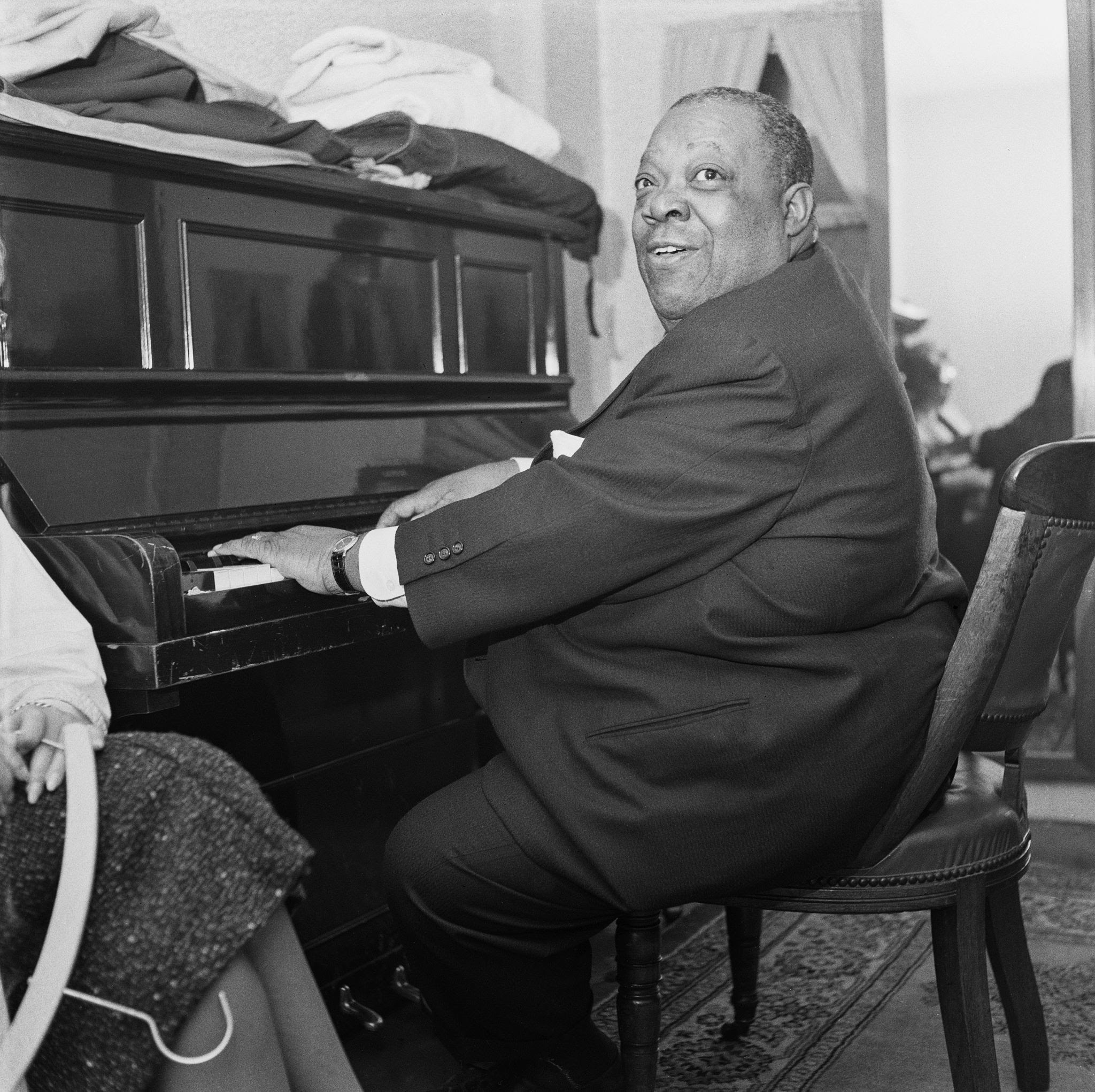Jimmy Rushing – A Complete Biography
Introduction
Jimmy Rushing—affectionately nicknamed “Mr. Five by Five”—was one of the most commanding blues and jazz voices of the 20th century. Best known as the featured singer with Count Basie’s Orchestra in the 1930s and ’40s, Rushing fused the earthy urgency of Kansas City blues with the rhythmic lift of swing. His booming yet supple baritone could sail over a roaring big band without amplification, but he also delivered ballads with gentlemanly poise. Beyond Basie, he appeared with figures from Jelly Roll Morton to Dave Brubeck, cut definitive small-group sides, toured internationally, and helped shape the vocal language that fed postwar rhythm & blues.

Childhood
James Andrew Rushing was born in Oklahoma City to a musical family—his father, Andrew, played trumpet (some sources say tuba), and his mother, Cora, and an uncle were singers; a cousin, Wesley Manning, helped steer him from violin toward the piano. He studied music theory at Douglass High School in Oklahoma City, absorbing formal instruction while also soaking up the vibrant “Deep Deuce” district where his father ran a lunchroom. These early experiences gave him both discipline and a front-row seat to the nightlife that would inform his phrasing and repertoire.
Youth
As a teenager and young adult, Rushing continued developing as a pianist and occasional singer. Several accounts note that he attended Wilberforce University in Ohio, where he sang and played before heading out as a traveling musician. In the early 1920s he worked around the Midwest and on the West Coast—reportedly even crossing paths with Jelly Roll Morton in Los Angeles—before returning to the Plains, ready to make the jump from capable pianist to star vocalist.
Adulthood
Rushing’s professional breakthrough came in the late 1920s. He joined bassist Walter Page’s Blue Devils in 1927, then moved to Bennie Moten’s Kansas City band in 1929. When Moten died in 1935, pianist Count Basie formed his own orchestra and retained Rushing, launching a 13-year run that produced some of the most buoyant blues vocals ever recorded. Signature performances from this era—“Good Morning Blues,” “Sent for You Yesterday (And Here You Come Today),” “Harvard Blues,” and “Goin’ to Chicago”—made Rushing the definitive big-band blues shouter.
After Basie’s first orchestra disbanded in 1950, Rushing briefly stepped back before fronting his own small groups and thriving as a guest star. He appeared in the landmark TV program The Sound of Jazz (1957), sang on Duke Ellington’s Jazz Party (1959), cut a warmly swinging album with the Dave Brubeck Quartet (1960), and toured the U.K. with Humphrey Lyttelton. Through the 1960s he recorded frequently—often revisiting Basie-era material with modern clarity and undimmed power. Critics praised the combination of operatic oomph and conversational ease in his delivery.
Major Compositions (and Signature Titles)
Though celebrated foremost as an interpreter, Rushing also contributed lyrics and co-writes to several staples of the Basie songbook:
- “Goin’ to Chicago Blues” — widely credited to Count Basie (music) and Jimmy Rushing (lyrics). First recorded in 1941, it became one of Rushing’s most enduring vehicles on record and on stage.
- “Good Morning Blues” — another Basie-band classic credited to Basie and Eddie Durham (music) with lyrics by Rushing; it effectively served as a Basie theme and a personal calling card for Rushing.
- “Sent for You Yesterday (And Here You Come Today)” — credited to Basie and Eddie Durham (music) with lyrics by Rushing; its sly, laid-back gait epitomizes the Kansas City jump-blues feel Rushing helped define.
These works, along with his definitive performances of “Harvard Blues” (lyrics by journalist George Frazier, music by Tab Smith), show Rushing’s range: witty collegiate pastiche one moment, rolling, churchy blues the next.
Death
Rushing was diagnosed with leukemia in the early 1970s. He continued to sing in New York clubs until shortly before his death on June 8, 1972, at Flower Fifth Avenue Hospital in Manhattan. He was interred at Maple Grove Cemetery in Kew Gardens, Queens. Contemporary notices recorded his age as 68.
Conclusion
Jimmy Rushing’s legacy rests on more than sheer volume or bravura; it lies in how he welded blues feeling to big-band finesse. With Basie, he helped codify the Kansas City style and carried that sound into the postwar era through small-group dates and high-profile collaborations. Later generations—from Joe Turner to early R&B belters—absorbed his approach to timing, diction, and emotional shading. Today, Rushing stands as a bridge between classic blues and modern swing vocalism, a singer whose artistry made even the roughhouse lyric feel urbane—and whose blues could still move a dance floor.
Comments are closed